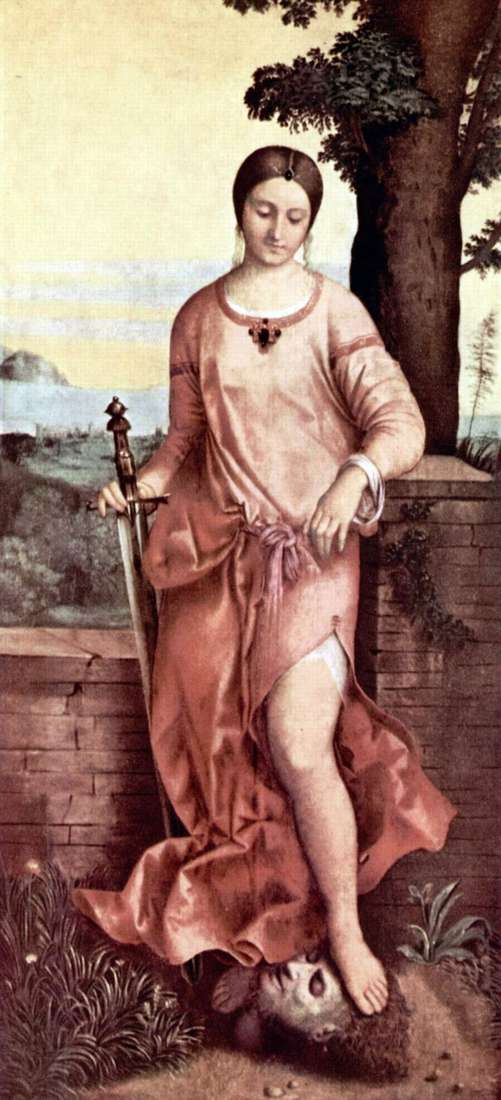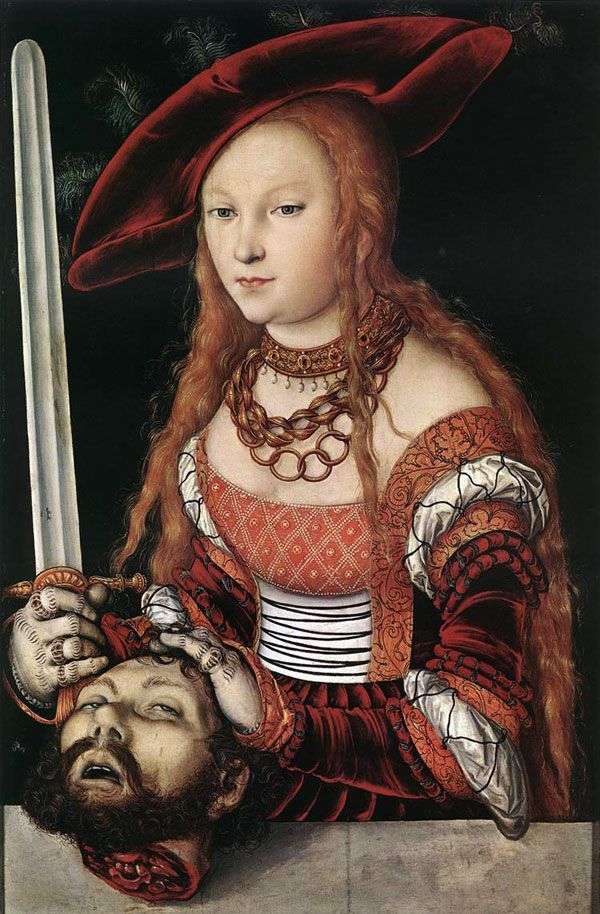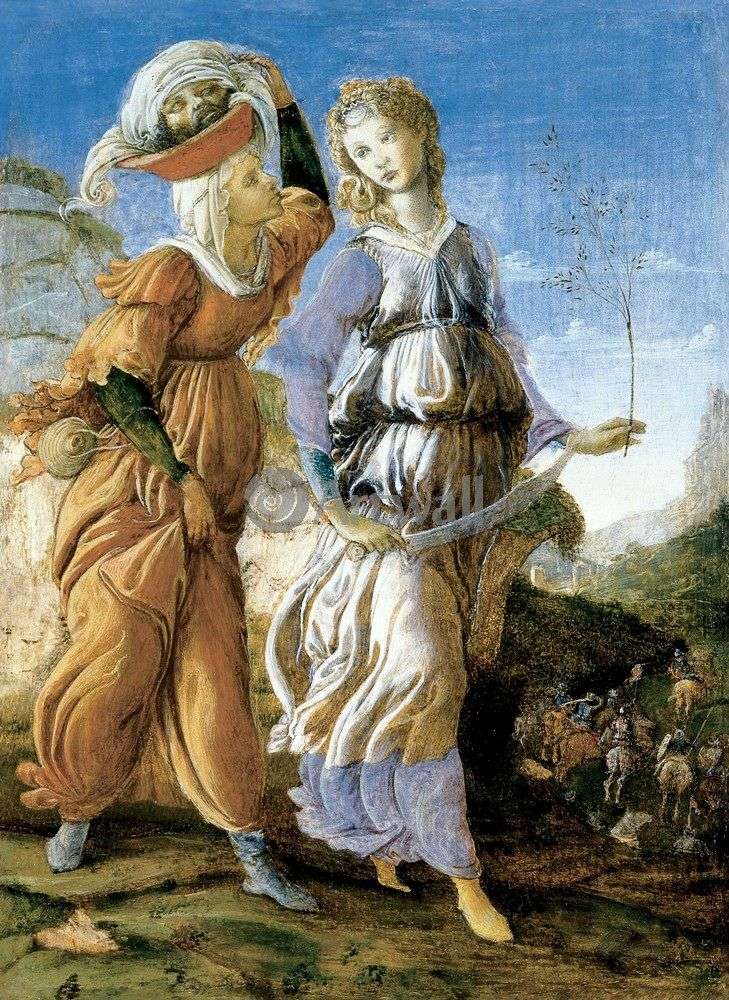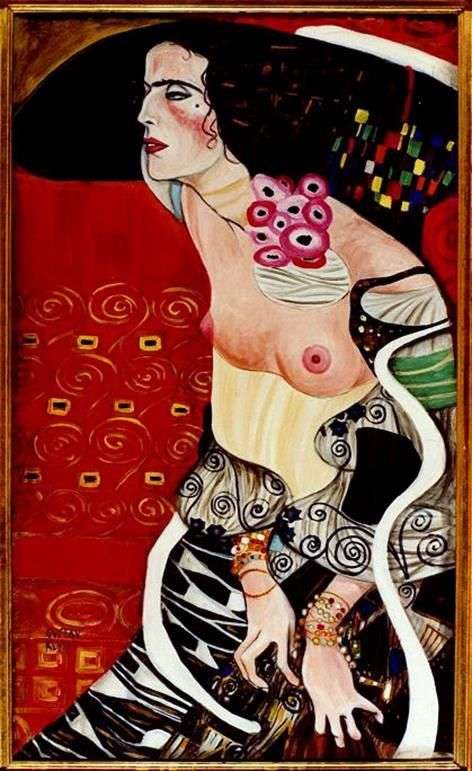
The painting “Judith” was painted by the Venetian artist Giorgione, the approximate date of creation is 1504. The size of the picture is 144 x 67 cm, wood, oil, transferred to canvas. The work of the artist “Judith” is dedicated to the well-known biblical story. In the picture of Giorgione, the heroine who killed Holofernes suddenly appears not militant, but thoughtfully tender.
In this famous work of the artist there is an expression of the feeling of the mysterious complexity of the inner mental world of a man concealed behind the apparent clear beauty of his noble appearance. The painting “Judith” is formally a composition on a biblical theme. And, unlike the paintings of many quattrocentists, it is the composition on the theme, not its illustration.
It is characteristic that the master does not represent any culmination from the point of view of the development of the event, as the masters of the quattrocento usually did. Against the backdrop of a calm pre-clear clear landscape under the canopy of oak stands, leaning musingly on the balustrade, slender Judith. The smooth tenderness of her figure in contrast is shaded by an array of the trunk of a mighty tree.
Softly scarlet clothes are permeated with a restlessly broken rhythm of folds, as if a distant echo of a swirling whirlwind. In her hand she holds a large double-edged sword, supported by a sharp end, into the ground, the cold glitter and straightness of which contrasts the flexibility of the half-naked leg trampling the head of Holofernes. On the face of Judith, an elusive half-smile slides. This composition, it would seem, conveys all the charm of the image of a young woman, coldly beautiful and clear, which echoes, as a kind of musical accompaniment, a soft clarity of peaceful nature.
At the same time, the cold cutting blade of the sword, the unexpected cruelty of the motive – a gentle naked foot trampling on the dead head – brings the sensation of some vague alarm and anxiety to this seemingly harmonious, almost idyllic mood. In general, the main motive, of course, is the clear and calm purity of a dreamy mood. However, the very image of the image and the mysterious cruelty of the motive of the sword and the trampled head, the near-puzzle complexity of this dual mood leave the modern viewer in some confusion.
But Giorgione’s contemporaries, apparently, were less struck by the cruelty of contrast, rather than attracted by that subtle transmission of the echoes of the far-away storms and dramatic conflicts, against which especially acute was the discovery of subtle harmony, the happy state of a dreamily beautiful beautiful human soul.
 Judith Beheading Holofernes by Caravaggio
Judith Beheading Holofernes by Caravaggio Judith Beheading Holofernes by Artemisia Gentileschi
Judith Beheading Holofernes by Artemisia Gentileschi Judith with the head of Holofernes by Lucas Cranach
Judith with the head of Holofernes by Lucas Cranach Judith by Hans von Aachen
Judith by Hans von Aachen Return of Judith to Vetiluy by Sandro Botticelli
Return of Judith to Vetiluy by Sandro Botticelli Judith decapitant Holofernes by Artemisia Gentileski
Judith decapitant Holofernes by Artemisia Gentileski Judith, killing Holofernes by Michelangelo Merisi da Caravaggio
Judith, killing Holofernes by Michelangelo Merisi da Caravaggio Judith II by Gustav Klimt
Judith II by Gustav Klimt